Romanticism and Fantasy: The Gothic
 This is the fifth in an ongoing series of posts about Romanticism and the development of fantasy fiction; you can find previous installments here, here, here, and here. To recap so far: I’ve looked at the emergence of the fantastic in English literature in the 18th century up to about 1789, noting that it was connected to a strain of antiquarianism. Then I looked at developments in French literature, which included the creation of a tradition of literary fairy tales as well as stories based on the Arabian Nights; last week I looked at German writing, and noted that the 1789 publication of Friedrich Schiller’s popular Der Geist-Sehrer, The Ghost-Seer, helped foster a tradition of popular horror writing in German which had a complex relationship of mutual influence with another horror tradition in England. That English tradition is what I aim to write about this week: the Gothic novel.
This is the fifth in an ongoing series of posts about Romanticism and the development of fantasy fiction; you can find previous installments here, here, here, and here. To recap so far: I’ve looked at the emergence of the fantastic in English literature in the 18th century up to about 1789, noting that it was connected to a strain of antiquarianism. Then I looked at developments in French literature, which included the creation of a tradition of literary fairy tales as well as stories based on the Arabian Nights; last week I looked at German writing, and noted that the 1789 publication of Friedrich Schiller’s popular Der Geist-Sehrer, The Ghost-Seer, helped foster a tradition of popular horror writing in German which had a complex relationship of mutual influence with another horror tradition in England. That English tradition is what I aim to write about this week: the Gothic novel.
Today, the adjective ‘gothic’ implies a certain aesthetic, deriving from the word’s use to describe a certain kind of horror writing that had its height in the 1790s. That usage is a largely modern phenomenon. At the time, writers of books we now call ‘gothic’ mostly described their works as ‘romances.’ (Certain critics, incidentally, have argued that gothic writing is distinct from Romanticism proper; my definition of Romanticism is broad, and certainly includes works self-consciously written in the romance tradition.)
Why ‘gothic’? Before about the middle of the 18th century, ‘gothic’ referred to the Germanic peoples who sacked Rome, and by extension to the Middle Ages that followed the fall of the Western Roman Empire. ‘Gothic’ therefore also meant things that were outdated or obsolete, and particuarly all that was crude or tasteless. It tended to imply superstition, and the marvellous. It was implicitly opposed to the classical. As an adjective, it could mean English or German, Druidical, Norman, Tudor, even, in some contexts, ‘Oriental’.
 In the mid-18th century, ‘gothic’ also specifically referred to medieval architecture. One historical school of thought derived the pointed arch from the Druids, and at the same time viewed it as a symbol of medieval Germanic tribes, such as the Angles and Saxons. A ‘gothic revival’ was well underway in architecture by the middle of the 18th century, as builders integrated medieval elements into their work. Horace Walpole, an antiquarian and collector, built a home for himself on Strawberry Hill, a farm not far from London, which included ‘gothic’ decorations like stained glass windows and suits of armour. Walpole filled his home with such ‘gothic fragments,’ whatever medieval items he could find cheaply, and put up cardboard battlements and wallpaper painted with groined arches.
In the mid-18th century, ‘gothic’ also specifically referred to medieval architecture. One historical school of thought derived the pointed arch from the Druids, and at the same time viewed it as a symbol of medieval Germanic tribes, such as the Angles and Saxons. A ‘gothic revival’ was well underway in architecture by the middle of the 18th century, as builders integrated medieval elements into their work. Horace Walpole, an antiquarian and collector, built a home for himself on Strawberry Hill, a farm not far from London, which included ‘gothic’ decorations like stained glass windows and suits of armour. Walpole filled his home with such ‘gothic fragments,’ whatever medieval items he could find cheaply, and put up cardboard battlements and wallpaper painted with groined arches.
In 1764, Walpole, a writer and publisher, seems to have had a dream early in June in which he saw a gigantic armoured hand. That dream became the seed for a novel-length story he wrote in two months: The Castle of Otranto. The book is set in the Middle Ages, in an Italian castle, and weaves ghosts and visions into a tale of a diabolical schemer, Prince Manfred, trying to dispossess the true heir to the castle and secure his own rule. Critics often claim to be baffled at the novel’s popularity and its enduring reputation, but in fact it’s a lean, quick-paced story packed with colour and incident. It is true that the characters, with the arguable exception of Manfred, are so simply drawn as to be almost non-existent, and that the plot is filled with coincidences and twists that were cliché even a quarter of a millenium ago. Still, overall it’s quite readable. Walpole subtitled Otranto “A Gothic Story,” unintentionally creating a label for a genre of writing which would emerge in his book’s wake.
When Walpole first published Otranto, he claimed it was a translation of an Italian tale, and published it under a pseudonym. It was reasonably well-received, though, and in a second edition in 1765 he admitted authorship. More, he wrote a fascinating preface in which he laid out his plan for the book:
It was an attempt to blend the two kinds of romance, the ancient and the modern [that is, the tales of Arthur and Charlemagne on the one hand, and the modern realistic novel on the other]. In the former, all was imagination and improbability: in the latter, nature is always intended to be, and sometimes has been, copied with success. Invention has not been wanting; but the great resources of fancy have been dammed up, by a strict adherence to common life. But if, in the latter species, Nature has cramped imagination, she did but take her revenge, having been totally excluded from old romances. The actions, sentiments, and conversations, of the heroes and heroines of ancient days, were as unnatural as the machines employed to put them in motion.
The author of the following pages thought it possible to reconcile the two kinds. Desirous of leaving the powers of fancy at liberty to expatiate through the boundless realms of invention, and thence of creating more interesting situations, he wished to conduct the mortal agents in his drama according to the rules of probability; in short, to make them think, speak, and act, as it might be supposed mere men and women would do in extraordinary positions. He had observed, that, in all inspired [religious] writings, the personages under the dispensation of miracles, and witnesses of the most stupendous phenomena, never lose sight of their human character: whereas, in the productions of romantic story, an improbable event never fails to be attended by an absurd dialogue. The actors seem to lose their senses, the moment the laws of nature have lost their tone. As the public have applauded the attempt, the author must not say he was unequal to the task he had undertaken: yet, if the new route he has struck out shall have paved a road for men of brighter talents, he shall own, with pleasure and modesty, that he was sensible the plan was capable of receiving greater embellishments than his imagination, or conduct of the passions, could bestow on it.
Walpole here is talking about an aim that seems to underlie much of subsequent fantasy fiction: the union of the marvellous with realistic depiction of character. He’s trying to use the new technical devices of Fielding, Richardson, and the novel of sensibility, to create a new kind of ‘romance,’ of fantastic tale. I don’t think his attempt was really successful, but I do think his acknowledgement that this was what he was trying to do is important. His articulation of his aim, his statement about how his book is to be read, suggests a way of looking at fiction distinct from the prevailing critical norms: rather than judge a book on how close it is to reality, he suggests that it’s appropriate to consider the imaginative aspect as well — that a story should be judged on how well it integrates realism and imagination, fact and fiction. And, unknowingly, situates himself at the start of modern fantasy.
 Later writers would try to follow Walpole’s lead in various ways, at first usually trying to make the balance of realism and fantasy work by downplaying the fantastic. In 1771 James Beattie published The Minstrel, about a poet in “Gothic days.” In 1773 Anna Laetitia Aiken and her brother John published a collection of essays, two of which investigated the appeal of romances and of terror. Ever since Edmond Burke’s 1757 Inquiry into the Origin of our Ideas of the Sublime and the Beautiful, there had been a link between the idea of the sublime, that which was majestic, and the terrifying; the Aikens investigated how the pleasurable sensation of terror was played out in fiction, and included a fragment of a horror story about a medieval knight in a haunted castle.
Later writers would try to follow Walpole’s lead in various ways, at first usually trying to make the balance of realism and fantasy work by downplaying the fantastic. In 1771 James Beattie published The Minstrel, about a poet in “Gothic days.” In 1773 Anna Laetitia Aiken and her brother John published a collection of essays, two of which investigated the appeal of romances and of terror. Ever since Edmond Burke’s 1757 Inquiry into the Origin of our Ideas of the Sublime and the Beautiful, there had been a link between the idea of the sublime, that which was majestic, and the terrifying; the Aikens investigated how the pleasurable sensation of terror was played out in fiction, and included a fragment of a horror story about a medieval knight in a haunted castle.
Then, in 1777, Clara Reeve published her historical novel The Champion of Virtue: A Gothic Story, writing in the forward that “this story is the literary offspring of The Castle of Otranto.” Republished the next year as The Old English Baron, Reeve diluted the supernatural elements of Walpole’s tale considerably, while expanding the descriptions and the depiction of character. Walpole himself dismissed it as “the most insipid dull thing you ever saw.” As it happened, it was the last major work to be subtitled ‘gothic,’ and though the word would occasionally be used in reviews, the use of the word to signify a specific genre of writing wouldn’t come until the twentieth century.
In fact, that genre was still in the process of being defined. The 1780s seem to have been a time of much debate about the nature of romance, and where it came from; some writers thought romance was a product of northern European culture, others thought it had come into Europe from the east at the time of the Crusades, and a few people thought it was distinctively Celtic. It was the nature of the time to look for a single source for the romance tradition. Reeve herself, in her 1785 The Progress of Romance, joined the debate with an essay arguing (in line with Walpole’s ambitions) that romance was changing under the influence of the novel form.
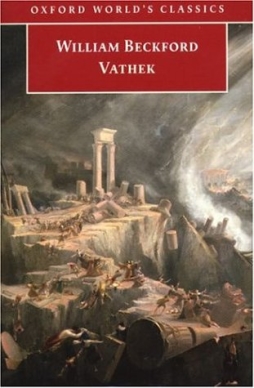 In terms of fiction, 1783 saw the publication of Spohia Lee’s immensely popular novel The Recess. Again, this was a historical fiction in which supernatural events played a minor role — and, for that matter, in which the history was notably shaky. Conversely, in 1786 William Beckford published Vathek (written in 1782), a translation from his original French; Vathek was a dark Arabian fantasy, often claimed as a gothic tale although seeming not to resemble anything else in the gothic tradition. Why is Vathek considered gothic but not, say, The Adventures of Baron Münchhausen, published in its final version in the same year? Tonally, Vathek is bleak where Münchhausen is jovial. Both works are broad and almost cartoon-like, but Vathek seems to have an underlying interest in the macabre that Münchhausen does not.
In terms of fiction, 1783 saw the publication of Spohia Lee’s immensely popular novel The Recess. Again, this was a historical fiction in which supernatural events played a minor role — and, for that matter, in which the history was notably shaky. Conversely, in 1786 William Beckford published Vathek (written in 1782), a translation from his original French; Vathek was a dark Arabian fantasy, often claimed as a gothic tale although seeming not to resemble anything else in the gothic tradition. Why is Vathek considered gothic but not, say, The Adventures of Baron Münchhausen, published in its final version in the same year? Tonally, Vathek is bleak where Münchhausen is jovial. Both works are broad and almost cartoon-like, but Vathek seems to have an underlying interest in the macabre that Münchhausen does not.
(Beckford himself is an almost gothic figure; born to vast riches, he was gay, dabbled in the occult, and, from 1793, built a vast ‘gothic’ ruin on his estate at Wiltshire. Fonthill Abbey had thirty-eight-foot-high doors, a two-hundred–eighty-five-foot tower, interior doors covered by velvet and golden embroidery, and 60 fires always kept burning; it was surrounded by forests of trees from the Americas and free-roaming exotic animals, on grounds covering six thousand acres. Beckford had the resources to create the gothic paradise Walpole could only dream of, filled with, according to one description, “fine medals, gems, enamell’d miniatures, drawings, old and modern, curios, prints and Manuscripts, and at last a fine and well-furnish’d library, all the books richly bound and the best editions … Near every chimney in the sitting rooms there were large Gilt fillagree baskets fill’d with perfumed coals that produced the brightest flame.”)
Still, Vathek was marginal to the development of the romance in England in the late 18th century. The writer who really defined the gothic, or contemporary romance, was Ann Radcliffe. Radcliffe, born Ann Ward in 1764, came from an upper-middle-class background. Married at 23, she began writing soon after. Her first novel, The Castles of Athlin and Dunbayne: A Highland Story, was published in 1789. A Sicilian Romance followed in 1790, and The Mysteries of the Forest in 1791. The Mysteries of Udolpho, her best-known and most popular work, was published in 1794. She published a travel book in 1795, The Italian in 1797, and then nothing more until the posthumously-published Gaston de Blondeville in 1826.
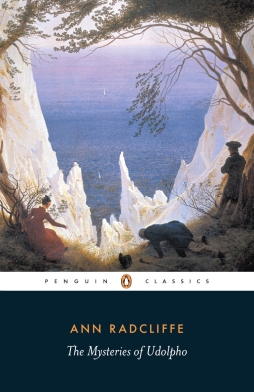 Radcliffe’s work definitively shaped the gothic romance. Her stories were set in the past, typically in Catholic France or Italy; they typically focussed around a passive, implicitly virtuous, female who was persecuted by a diabolical and powerful male. Radcliffe’s novels are filled with poetry, often recited or composed by her characters; they’re also full of long descriptive passages, conscious attempts to depict landscape in accordance with Burke’s ideas of the sublime. Radcliffe’s work is in one sense an investigation of Burke’s ideas about the alliance between the sublime and the terrifying. Contrasted with the richness and scale of the natural world are crumblling man-made structures, perhaps the most famous being the castle of Udolpho; ruins, or buildings on the edge of ruin, which imprison Radcliffe’s heroines, and in which they must struggle to resist the malice of the male villain.
Radcliffe’s work definitively shaped the gothic romance. Her stories were set in the past, typically in Catholic France or Italy; they typically focussed around a passive, implicitly virtuous, female who was persecuted by a diabolical and powerful male. Radcliffe’s novels are filled with poetry, often recited or composed by her characters; they’re also full of long descriptive passages, conscious attempts to depict landscape in accordance with Burke’s ideas of the sublime. Radcliffe’s work is in one sense an investigation of Burke’s ideas about the alliance between the sublime and the terrifying. Contrasted with the richness and scale of the natural world are crumblling man-made structures, perhaps the most famous being the castle of Udolpho; ruins, or buildings on the edge of ruin, which imprison Radcliffe’s heroines, and in which they must struggle to resist the malice of the male villain.
Burke’s connection of the sublime with terror seems to have been a crucial element in the evolution of the late 18th century romance. The form became an exercise in the stimulation of terror; in the evocation of the sublime. But if Walpole consciously tried to meld two forms of romance — that is, tried to meld the romance and the novel — Radcliffe seems more interested in grafting a romantic tone onto the realistic novel, and specifically onto the ‘amatory fiction’ of the earlier 18th century. She shunned the fantastic, though she used a technique that Walter Scott named the “Explained Supernatural,” by which apparently supernatural events were later explained away as perfectly natural, if improbable, occurrences. Radcliffe was influenced by Walpole, Reeve, and Lee, and it’s tempting to speculate that Schiller’s Ghost-Seer, with its long passages debunking apparently supernatural manifestations, was an influence as well — Radcliffe seems to have read German, and so may have been affected by Schiller and the emerging Schauerroman genre.
It has to be said, though, that on the whole Radcliffe’s work was gentler than the relatively brutal and bloody Schauerroman, examples of which were being translated into English throughout the 1790s. In 1788 sentimenal novelist Henry Mackenzie gave an address to the Royal Society of Edinburgh on German drama; that seems to have triggered an interest in German prose and plays. In 1791 Beckford published a loose translation of Popular Tales of the Germans. In 1792, Charles Spiess’ Das Petermänchen was translated as The Dwarf of Westerburg; Christiane Naubert’s 1788 Hermann von Unna, a novel of secret societies in the 15th century, was translated in 1794, which seemed to trigger a flood of similar writing; and perhaps most notably, in 1795 Schiller’s Ghost-Seer was translated. The German works were at first felt to contain “a wildness of fancy,” a freedom from Aristotelian rules, but as the decade went on critical fashion turned against them, and they came to be seen as extravagant — even as politically radical.
 The German translations do seem to have had an effect on the English gothic. Most notably, they clearly influenced Matthew Lewis’ 1796 novel The Monk. A bloody narrative of monastic corruption, it included the Wandering Jew, the ghost of a bleeding nun — as well as incest, necrophilia, and rape. Where Ann Radcliffe was praised for containing nothing immoral or licentious, Lewis was seen as celebrating transgression, and condemned for it. He went on to write plays, such as 1797’s The Castle Spectre, as well as various other novels.
The German translations do seem to have had an effect on the English gothic. Most notably, they clearly influenced Matthew Lewis’ 1796 novel The Monk. A bloody narrative of monastic corruption, it included the Wandering Jew, the ghost of a bleeding nun — as well as incest, necrophilia, and rape. Where Ann Radcliffe was praised for containing nothing immoral or licentious, Lewis was seen as celebrating transgression, and condemned for it. He went on to write plays, such as 1797’s The Castle Spectre, as well as various other novels.
Radcliffe, and writers imitating her example, formed one strand of the contemporary romance which would later be called gothic; the German translations, and works inspired by them, formed another. Between them they effectively established the dominant form of commercial English fiction for over a decade, and arguably for over two decades — certainly through to 1805, and perhaps to 1820. Writers with philosophical or political ambitions would use the form, such as William Godwin in his non-supernatural Caleb Williams (1794) and his fantastic St. Leon (1799), which follows a wandering immortal. Parodies were written, though the best-known, Jane Austen’s Northanger Abbey (written about 1798) wouldn’t appear in print until 1818; early feminist Mary Wollstonecraft left an ‘anti-gothic,’ The Wrongs of Women, unfinished at her early death in 1797. The romance craze even spread across the ocean, affecting emerging American literature — Charles Brockden Brown, sometimes called America’s first professional author, wrote four novels from 1798 to 1800 (Wieland; Arthur Mervyn; Ormond; and Edgar Huntly), all more or less affected by contemporary romance and all widely read in both Britain and America.
One analysis of the quantity of English gothic novels of the time (in The Cambridge Companion to Gothic Fiction) suggests a clear pattern: 2 gothics published in 1773, 1 in 1779, 1783, and 1784, 2 in 1785, 3 in 1786, only 1 in 1787 — then 7 in 1788, 11 in 1789, 9 in 1790 and 1791, 5 in 1792, back up to 9 in 1793, then 14, 19, 21 for two years running, 25 for two years running, and an apex in 1780 with 27 gothics published. Between 1788 and 1807 the gothic represented about 30 percent of all novels published, with a high of 38 percent in 1795. It drops to 20 percent in 1808, and then further drops consistently over the years after that, sinking below 10 percent in 1821. At least one publisher focussed on the gothic: entrepreneur William Lane’s blue-covered Minerva Press books were infamous cheap novels, many of them anonymous.
 Nor were novels the only form the gothic conquered. The London stage was dominated by gothic plays, many of them translations from German, especially from the prolific August Kotzebue. At the time, there were two theatres in London with official legal sanction to present plays, overseen by government censors. Over the course of the 18th century, the theatres had grown larger and larger to accomodate demand. By the end of the century they could hold three thousand people, meaning that the plays they presented had to depend on spectacle as much as good drama. The ghosts and castles of the gothic were ideal for this purpose. Few plays of the time, perhaps only Coleridge’s somewhat gothic-inflected Remorse, have survived in most critical histories. But for audiences, the theatre was a major popular form — plays then were like blockbuster movies now.
Nor were novels the only form the gothic conquered. The London stage was dominated by gothic plays, many of them translations from German, especially from the prolific August Kotzebue. At the time, there were two theatres in London with official legal sanction to present plays, overseen by government censors. Over the course of the 18th century, the theatres had grown larger and larger to accomodate demand. By the end of the century they could hold three thousand people, meaning that the plays they presented had to depend on spectacle as much as good drama. The ghosts and castles of the gothic were ideal for this purpose. Few plays of the time, perhaps only Coleridge’s somewhat gothic-inflected Remorse, have survived in most critical histories. But for audiences, the theatre was a major popular form — plays then were like blockbuster movies now.
Walpole wrote a play, The Mysterious Mother, in 1768; due to its theme of incest, though, it could not be staged, and wasn’t even published until the early 1790s. Otranto was adapted to the stage in 1781 as The Count of Narbonne, but, crucially, all the supernatural paraphernalia was dropped out. Despite the reflections in Walpole’s preface, producers believed that contemporary audiences would not accept ghosts in a play by a contemporary writer.
Various other gothic dramas have been found from the 1770s and 1780s, but the turning point for the gothic on stage would seem to be 1789; after that point, a steady stream of gothic plays reached the stage, both original tales and adaptations of popular novels. A crucial turning-point also seems to be 1794, when James Boaden staged Fountainville Forest, an adaptation of Radcliffe’s Romance of the Forest, and actually added a ghost to the tale. Audiences accepted it.
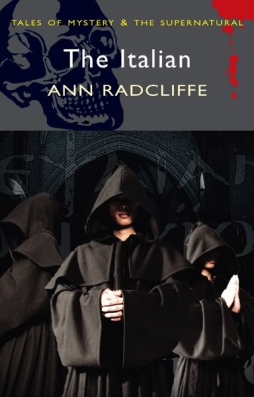 Similarly, street literature, chapbooks, also presented stories we would now call gothic. These were manifestations of print culture below even Lane’s Minerva Press. Typically sold in market-stalls and by pedlars along country roads, printed on cheap paper with worn type, decorated by frequently-reused woodcuts, chapbooks had existed almost since the dawn of printing. The books were usually eight or twelve pages long, mostly adventure stories or love stories — romances — as well as almanacs, joke books, scandalous biographies, and collections of prophecies. Changes in printing technology (which would eventually lead to the replacement of chapbooks by penny dreadfuls) led to publishers printing new kinds of chapbooks at about this time, abridgements of popular novels, especially gothics. Since chapbooks were shorter than full-length novels, the abridgement of a novel meant that description and character had to be cut out so that incident and story could remain. Chapbooks were aimed at the lower classes; they’re a sign that a fascination with the gothic, with contemporary romance, was alive in every part of society.
Similarly, street literature, chapbooks, also presented stories we would now call gothic. These were manifestations of print culture below even Lane’s Minerva Press. Typically sold in market-stalls and by pedlars along country roads, printed on cheap paper with worn type, decorated by frequently-reused woodcuts, chapbooks had existed almost since the dawn of printing. The books were usually eight or twelve pages long, mostly adventure stories or love stories — romances — as well as almanacs, joke books, scandalous biographies, and collections of prophecies. Changes in printing technology (which would eventually lead to the replacement of chapbooks by penny dreadfuls) led to publishers printing new kinds of chapbooks at about this time, abridgements of popular novels, especially gothics. Since chapbooks were shorter than full-length novels, the abridgement of a novel meant that description and character had to be cut out so that incident and story could remain. Chapbooks were aimed at the lower classes; they’re a sign that a fascination with the gothic, with contemporary romance, was alive in every part of society.
So what, with all this said, what was the gothic story, exactly?
Through the 1790s, the gothic, the contemporary romance, acquired a very specific set of genre markers. Crumbling castles; a virtuous heroine; ghosts, or the appearance thereof; above all, a diabolical villain, typically a male who controlled the castle or manor in which the heroine would be trapped. Appropriately for a genre that began as an architectural movement, the gothic was notable for its edifices, structures that could be read as a symbol for the personality of the owner — unhealthy, labyrinthine, filled with secrets and horrors.
Typical characters in the gothic (as archetypal in their way as the roles in the commedia dell’arte) included foolish servants, a heroic young man to marry the heroine in the end, and an interfering older woman. The setting was typically in the Middle Ages, and usually in the south of Europe; it was not infrequent for the gothic to contain anti-Catholic comments or speeches. Generally, it could be said that the gothic embodied an ambiguous relationship to the past, and gothics have been read as a symptom of a Protestant bourgeois class attempting to denigrate old feudal power while at the same time claiming that power for itself.
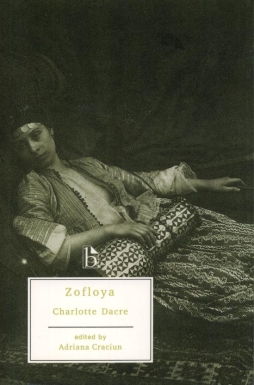 Clearly, though, in looking at the political implications of the gothic, one notices that it was a primarily female form in a largely male-dominated age. Ann Radcliffe in particular was not only a popular success, but critically esteemed for her prose, especially her depiction of landscape. And many of the writers who followed her, writing stories with obvious debts to her work, were women — Regina Maria Roche, Charlotte Dacre, and Eliza Parsons, to name only a few. Among the gothic playwrights were many women as well, with Joanna Baillie perhaps most notable.
Clearly, though, in looking at the political implications of the gothic, one notices that it was a primarily female form in a largely male-dominated age. Ann Radcliffe in particular was not only a popular success, but critically esteemed for her prose, especially her depiction of landscape. And many of the writers who followed her, writing stories with obvious debts to her work, were women — Regina Maria Roche, Charlotte Dacre, and Eliza Parsons, to name only a few. Among the gothic playwrights were many women as well, with Joanna Baillie perhaps most notable.
It has been argued that these writers produced a specifically ‘female gothic’ fiction, and that the depiction of troubled young women seeking to escape the control of an older man is an imaginative representation of the fears and experiences of the women of their era. It does seem that these writers were especially interested in describing the sensation of fear, which has been interpreted as a feminine interest in the internal landscape and subjectivity of their characters. Still, recent critical writing seems to be moving away from the idea of the female gothic as such, suggesting instead that these writers were involved in a conscious attempt to distinguish between terror, associated with the sublime, and horror; as Radcliffe wrote in a posthumously-published essay, “Terror and horror are so far opposite, that the first expands the soul, and awakens the faculties to a high degree of life; the other contracts, freezes, and nearly annihilates tham.”
Regardless of what the writers thought they were doing, it is clear that gender played a considerable part in critical reaction to the early gothics. Female writers were criticised for writing, and particularly for writing a kind of fiction that was believed likely to corrupt or mislead foolish (and female) readers. T.J. Matthias’ 1796 The Pursuits of Literature says of gothic novelists that “Though all of them are ingenious ladies, yet they are too frequently whining and frisking in novels, till our girls’ heads turn wild with impossible adventures; and now and then are tainted with democracy.” Radcliffe seems to have been considered in a class apart from her contemporaries, both in terms of quality and in terms of her morality. Although readers were disappointed in the rationalisation of the supernatural, her biographer Thomas Talford, claimed that it came about due to Radcliffe’s respect “for every species of authority.” For Talford, Radcliffe “confined herself, with delicate apprehensiveness, to the circle of domestic duties and pleasures. … She only, of all writers of romance … employed enchantments purely innocent.” Still, even Radcliffe’s work was held (by Hugh Murray, author of 1805’s Morality of Fiction) to be “not of a very high order.”
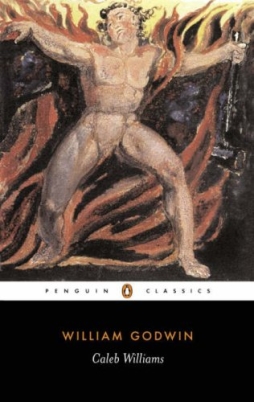 Was there any truth to the argument that the gothics were tainted by “democracy” — that is, by the radical liberalism of the American (or, worse, French) Revolution? The Marquis de Sade argued that this was the case: “This species of writing … became the necessary fruit of the revolutionary tremors felt by the whole of Europe.” The overthrow of feudal structures was seen as the equivalent of the overthrow of the feudal system itself; the collapsing gothic castle as a literary equivalent to the crumbling prison of the Bastille. Gothic was described as the ‘terrorist school’ of writing; a deliberate reference to the Reign of Terror in the wake of the Revolution.
Was there any truth to the argument that the gothics were tainted by “democracy” — that is, by the radical liberalism of the American (or, worse, French) Revolution? The Marquis de Sade argued that this was the case: “This species of writing … became the necessary fruit of the revolutionary tremors felt by the whole of Europe.” The overthrow of feudal structures was seen as the equivalent of the overthrow of the feudal system itself; the collapsing gothic castle as a literary equivalent to the crumbling prison of the Bastille. Gothic was described as the ‘terrorist school’ of writing; a deliberate reference to the Reign of Terror in the wake of the Revolution.
Conservative commentators at the time were often much exercised by the thought that radical ideas might be found in the gothics — and it is true that Godwin consciously included Jacobinical ideas in his works. On the other hand, Schiller, who had helped inspire the gothic form and was considered a radical, turned down an offer of citizenship in the French Republic with disgust. The French Revolution had led to unrest in England, to authors and booksellers being tried for seditious libel; the essayist William Hazlitt, looking back at the 1790s years later, would suggest that the popularity of gothic came the perception that all old structures were tottering. It has been suggested that the fad for German gothic stories from 1794 on, which emphasised the nefarious doings of secret societies in a way alien to the English stories, represented a shift in readers’ reactions to political events in France. Revolution became horrific, and the gothic a way by which the complex and varied reactions to the French Revoltion could be imaginatively indulged or exorcised.
Fantasy, romance, therefore becomes a way of helping the imagination metaphorically or symbolically deal with reality; which is something I’d argue fantasy has a tendency to do, whether intended by the fantasist or not. But how did contemporary critics deal with the efflorescence of fantasy that the gothic represented? Rationalised away or not, the gothic novels relied on the fantastic for much of their power. And they were explicitly defined as ‘romances’. How did critics of the time react to that?
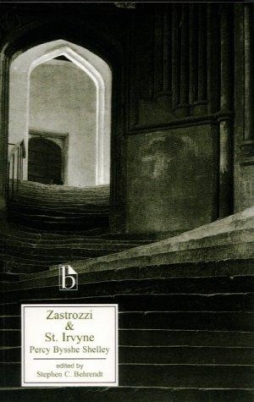 Not terribly well. An 1801 tract attacking the vogue for German writing argued that “literature cannot make a more valuable present to the world, than views of life and manners drawn with a faithful and correct hand;” the Germans, conversely, were characterised by “A straining at something superlative, an attempt to surpass nature, that produces only contortion and grimace.” Another writer in the magazine The Anti-Jacobin noted that Ann Radcliffe “has shewn herself thoroughly acquainted with the workings of the passions, and peculiarly skilled in communicating terrific impressions from imaginary causes; but I must confess I am still more pleased with her power of exhibiting the workings of the understanding and heart, in natural and probable situations.” Literature was still viewed as a means of improvement and education. The gothic was of no use in satisfying that need.
Not terribly well. An 1801 tract attacking the vogue for German writing argued that “literature cannot make a more valuable present to the world, than views of life and manners drawn with a faithful and correct hand;” the Germans, conversely, were characterised by “A straining at something superlative, an attempt to surpass nature, that produces only contortion and grimace.” Another writer in the magazine The Anti-Jacobin noted that Ann Radcliffe “has shewn herself thoroughly acquainted with the workings of the passions, and peculiarly skilled in communicating terrific impressions from imaginary causes; but I must confess I am still more pleased with her power of exhibiting the workings of the understanding and heart, in natural and probable situations.” Literature was still viewed as a means of improvement and education. The gothic was of no use in satisfying that need.
So the critics did not approve of the fantasy of the gothic, and assigned it to a low order of writing. And, after the first few years of the 19th century, its popularity began to wane. But not with everyone. Young Percy Bysshe Shelley wrote and self-published two gothics, 1810’s Zastrozzi and 1811’s St. Irvyne; they’re generally considered to be terrible, though having read Zastrozzi I admit I find a certain youthful energy that carries one along. Shelley, 17 when he wrote Zastrozzi, represented a new phenomenon; a generation that had grown up with the gothic, and whose imaginations had been activated by gothic imagery (there seems to me to be a direct parallel with the current generation of ‘literary’ writers unashamed of being influenced by comic books and sf). Shelley’s friend Byron apparently based much of his persona on one of Radcliffe’s villains. John Keats referred cheerfully to “Mother Radcliff” (sic) and wrote great poems filled with gothic machinery. In other words, the imaginative appeal of the gothic, of the romance form, had reached a new group of writers.
You could argue that by this time the gothic novel itself was demonstrating new depth. Perhaps the greatest of all gothic novels is the Polish Count Jan Potocki’s Manuscrit trouvé en Saragosse (The Manuscript Found in Saragossa). Potocki, a traveller and adventurer, wrote his story in French, supposedly to amuse his wife. The first part of the novel was published in 1805; another extract followed in 1813; then the two were published together in 1814. Potocki died in 1815, though, and the complete manuscript was never published — part of it, in fact, was lost, and survives only in an 1847 Polish translation.
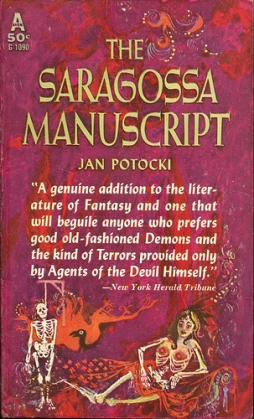 The book is a magnificently complex variant of the gothic, a kind of gothic Arabian Nights in form, an anthology of tales inside tales, all of them tinged with horror and the macabre. The setting is Spain in the early 18th century, and the characters include bandits, priests, soldiers, and more. The characters tell each other their stories over the course of sixty-six days, and as the story slowly moves toward a resolution they find their tales are all connected. It’s a remarkable performance, by turns horrific and humorous, tragic and sardonic. Much of the supernatural machinery of the stories is explained, but not all. It’s a masterpiece of the gothic style, an oddity from a writer neither English nor German.
The book is a magnificently complex variant of the gothic, a kind of gothic Arabian Nights in form, an anthology of tales inside tales, all of them tinged with horror and the macabre. The setting is Spain in the early 18th century, and the characters include bandits, priests, soldiers, and more. The characters tell each other their stories over the course of sixty-six days, and as the story slowly moves toward a resolution they find their tales are all connected. It’s a remarkable performance, by turns horrific and humorous, tragic and sardonic. Much of the supernatural machinery of the stories is explained, but not all. It’s a masterpiece of the gothic style, an oddity from a writer neither English nor German.
One of the greatest of the gothic romances was published in 1820, just as interest in the gothic was drying up. Charles Maturin, an Irish Anglican clergyman who tried to support himself by his pen, wrote a powerful book called Melmoth the Wanderer. Maturin had been writing gothics for some time; he ruefully recalled publishing The Fatal Revenge in 1807, just as gothics were falling off in popularity, and his 1816 play Bertram reached the stage only to be pilloried by Coleridge. Melmoth is a fascinating book, vaguely like Potocki’s Manuscrit in its use of stories-within-stories, but with a much fiercer concentration on character. The plot is thin, but Maturin’s intensity of conception goes some way to make up for that.
Arguably the gothic’s greatest moment came in 1816, when Percy Shelley — he of Zastrozzi, now a brilliant radical poet — and his young wife Mary were the guests of Shelley’s friend Lord Byron and his doctor, John Polidori. A reading from a book of German ghost stories led Byron to propose that each of the four of them should write a ghost story of their own. Two of those four stories became modern gothic myth.
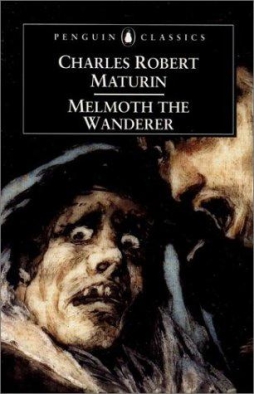 Byron spent several days writing a tale about a creature called a vampire, an undead monster that had appeared recently in the long poem Thalaba, by the minor poet Robert Southey. Byron imagined the vampire as a modern ghost, even an aristocrat, a considerable change from the image of the vampire in traditional folklore. He never completed his story, but when he abandoned it Polidori took it up, writing out the story of a young Englishman who encounters a mysterious, sinister aristocrat in Europe, sees him die, then returns home to find the aristocrat, Lord Ruthven, apparently returned to life and threatening his family. In April of 1819, Polidori’s novel, The Vampyre, was published in an English magazine, attributed to Byron. Both Polidori and Byron tried to correct the error, but to no avail. Polidori, unable to make a living at medicine or literature, committed suicide in 1821. The Vampyre, meanwhile, became immensely popular, translated repeatedly into French and German, adapted for the stage, even given unauthorised sequels: The Three Vampires and Son of the Vampire. The emergence in English of the vampire myth essentially dates to Polidori’s novel.
Byron spent several days writing a tale about a creature called a vampire, an undead monster that had appeared recently in the long poem Thalaba, by the minor poet Robert Southey. Byron imagined the vampire as a modern ghost, even an aristocrat, a considerable change from the image of the vampire in traditional folklore. He never completed his story, but when he abandoned it Polidori took it up, writing out the story of a young Englishman who encounters a mysterious, sinister aristocrat in Europe, sees him die, then returns home to find the aristocrat, Lord Ruthven, apparently returned to life and threatening his family. In April of 1819, Polidori’s novel, The Vampyre, was published in an English magazine, attributed to Byron. Both Polidori and Byron tried to correct the error, but to no avail. Polidori, unable to make a living at medicine or literature, committed suicide in 1821. The Vampyre, meanwhile, became immensely popular, translated repeatedly into French and German, adapted for the stage, even given unauthorised sequels: The Three Vampires and Son of the Vampire. The emergence in English of the vampire myth essentially dates to Polidori’s novel.
A much greater work, the greatest of all English gothics, was produced by Mary Shelley. Her 1818 story Frankenstein, Or, The Modern Prometheus was inspired by recent electrical experiments. It ought to be a complex a work, being, like Melmoth and The Manuscript Found in Saragossa, structured around a set of framing narratives. It’s also a subtle reworking of Milton’s Paradise Lost, among other texts. But the frame narratives and references are handled so well that the book reads as a direct and powerful horror story, adroitly and unsettlingly investigating themes of birth and death.
Shelley’s work succeeds, I think, because she uses the Romantic theme of the double so powerfully, vividly depicting both Victor Frankenstein and the monster he creates. To me, it’s an early realisation of Walpole’s aim of uniting the romance and the novel. It uses the techniques of the realist novel, even the epistolary form, to create a story that is fantastic at the core — and that also touches on something true and nightmarish. In Frankenstein, I find not only one of the greatest examples of the gothic novel, but also one of the great early realisations of the potential of fantasy.
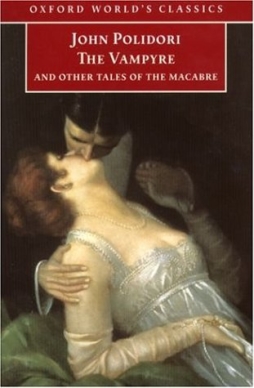 As it happened, the gothic novel in English seemed to fade away for a while. Austen’s Northanger Abbey, a satire of the gothic published in 1818, is often pointed to as symptomatic of the gothic’s decline. You can see a more direct commercial acknowledgement of the genre’s fading power in the Minerva Press’ abandonment of gothic fiction for children’s writing. Above all, I think you can see the gothic’s decline in the writings of Walter Scott.
As it happened, the gothic novel in English seemed to fade away for a while. Austen’s Northanger Abbey, a satire of the gothic published in 1818, is often pointed to as symptomatic of the gothic’s decline. You can see a more direct commercial acknowledgement of the genre’s fading power in the Minerva Press’ abandonment of gothic fiction for children’s writing. Above all, I think you can see the gothic’s decline in the writings of Walter Scott.
Scott had an ambiguous relationship to the gothic. His long poem The Lay of the Last Minstrel, published in 1805, was set in the 16th century and used all sorts of gothic machinery. Later, though, he’d turn against the gothic. Although he published a perceptive review of Frankenstein in 1818, distinguishing between various uses of the fantastic, by 1827 he was implicitly claiming (in a review of Hoffmann’s tales) that romances were obsolete: “As the knowledge to which we have before alluded made more general progress, it became impossible to detain the attention of the better instructed class by the simple and gross fables to which the present generation would only listen in childhood, though they had been held in honour by their fathers during youth, manhood, and old age.”
Fantasy, for Scott, was to be used sparingly: “It is also of a character which it is extremely difficult to sustain, and of which a very small proportion may be said to be better than the whole.” There seems to be some basis for thinking that Scott’s own historical fictions, beginning with Waverly in 1814, effectively replaced the gothic in popular culture. They were similar, but distinct stories. Scott’s fictions were much more conscious of the eras in which they were set, and strove to avoid anachronism so far as he was able — just as he avoided the use of the supernatural.
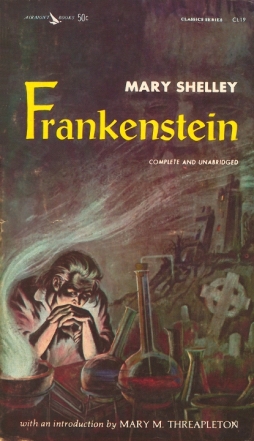 Still, the gothic never really entirely faded away. In 1824 James Hogg published his The Private Memoirs and Confessions of a Justified Sinner, a mixture of the gothic and the psychological novel, in which a man confesses to multiple murders with the alleged aid of the Devil. The early 1830s saw the emergence of Edgar Allen Poe; the 1840s, the Brontë sisters. The death of the gothic has been followed by a series of unearthly resurrections.
Still, the gothic never really entirely faded away. In 1824 James Hogg published his The Private Memoirs and Confessions of a Justified Sinner, a mixture of the gothic and the psychological novel, in which a man confesses to multiple murders with the alleged aid of the Devil. The early 1830s saw the emergence of Edgar Allen Poe; the 1840s, the Brontë sisters. The death of the gothic has been followed by a series of unearthly resurrections.
Overall, it seems to me that the gothic is not only a significant element of Romanticism, but also of the fantasy tradition. I think Walpole’s comment about uniting two different kinds of romance, the romance of chivalry and the modern realistic novel, is key. The gothic is an attempt at fusing the new techniques of mimesis, of representing character and consensual reality, with the marvellous. I think there’s a visible evolution of the ability to represent character in gothic fiction, growing more sophisticated from Walpole to Radcliffe to Shelley and Maturin, and I find the development of the structural sophistication of the later gothics fascinating. It seems to me that the gothic represents the first attempt in the prose novel form — as opposed to the prose-poetry of Macpherson’s Ossian — to write a modern fantasy. Effectively, it’s the beginning of the contemporary fantastic tradition.
Matthew David Surridge is the author of “The Word of Azrael,” from Black Gate 14. His new ongoing web serial is The Fell Gard Codices. You can find him on facebook, or follow his Twitter account, Fell_Gard.
I’ve never cared for the gothic mode myself as sensationalist as opposed to the ideal of heightened emotion of Romanticism. But it’s likely it is that very sensationalism that most links it in so many minds to Romanticism, as well as a preference for the exotic locale? But then, as in my case, when writers grab a location as an exotic locale, it’s usually a place I have a fair amount of personal knowledge of, or, know a lot of people who are from there, so everything that’s not right shows up very large, and spoils that suspension of disbelief.
When it comes to these kinds of works I’m rather like Jane Austen, who employs a liking for them among various of her characters as another indication of immaturity at best, and mediocre intelligence and taste at worst — I’m thinking here particularly of her spoof of them in Northhanger Abbey and the solomn determination of Harriet in Emma that her prosperous farmer suitor was unsuitable because he didn’t show an alacrity to possess himself of Radcliffe’s Romance of the Forest!
But as you so intelligently point out there is perhaps more to gothic fiction than that. But again, it’s too close to the horror mode for me to enjoy reading these works other than as research in the history of the novel, etc.
Love, C.
[…] on to talk about Romanticism and fantasy in France and in Germany before returning to England to discuss Gothic fiction. In those last two posts I found myself talking about writers consciously trying to mix fantastic […]
[…] elements of fantasy and Romanticism in France and Germany before returning to England to consider the Gothic. I wrote about the work of William Blake here, and last time I began a consideration of fantasy […]